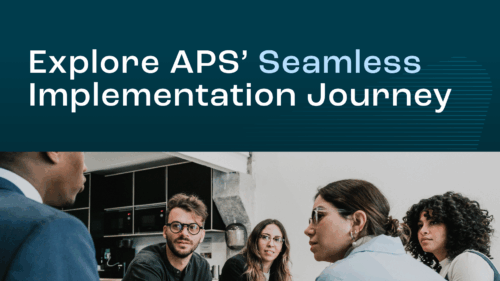
Onboarding is a pivotal moment in the employee lifecycle. However, when done poorly, it can undermine your entire HR strategy. New hires who experience inconsistent, confusing, or impersonal onboarding tend to disengage early.
Nearly 20% of employees leave within the first 45 days due to onboarding friction, costing companies thousands in lost productivity, hiring fees, and morale.
So, what’s the alternative to poor onboarding? A structured, strategic onboarding experience that empowers your people, reflects your culture, and sets the tone for long-term success. Let’s explore what this can look like and its benefits.
Why Onboarding Fails—and What It Costs You
Most companies don’t intend to have a broken onboarding process—it just happens. Without a clear implementation plan, onboarding can feel like a disconnected set of checklists rather than a cohesive experience. And the cost is steep:
- According to Gallup, only 12% of employees strongly agree that their organization does a great job onboarding new hires.
- Poor onboarding is one of the leading reasons new hires ghost after accepting an offer.
- Replacing an employee who leaves within the first year can cost 50–200% of their annual salary.
When new hires arrive without role clarity, cultural context, or relationship-building support, their enthusiasm quickly fades. This missed opportunity leads to a slower time to productivity and high turnover, all of which impact your bottom line.
The Ripple Effect of Poor Onboarding Experiences
Onboarding employees isn’t just a formality—it’s a key business function with long-lasting impact. Poor onboarding experiences can lead to low morale, diminished productivity, and higher turnover rates. When organizations fail to invest in onboarding, they miss the opportunity to improve employee engagement.
To avoid this, HR teams must approach onboarding with the same level of attention and planning as the hiring process. A structured, supportive experience creates a sense of belonging and helps new hires build early confidence. When employees feel welcomed and valued, they’re more likely to stay, thrive, and contribute meaningfully to the company’s mission.
What Best-in-Class Onboarding Looks Like
Effective onboarding isn’t just a one-day orientation. It’s a journey built around the employee experience. Leading organizations have overhauled their onboarding strategies to focus on long-term integration, and the results speak for themselves: higher retention, faster ramp-up times, and deeper engagement.
Here’s what top-performing onboarding programs include:
- A structured, step-by-step plan lasting 90 days to a year.
- Early engagement before day one (welcome kits, team intros, manager outreach).
- Support for cross-departmental relationships and cultural alignment.
- Realistic role expectations and clear project goals.
- Embedded mentorship or buddy systems to guide employees in real time.
- Continuous improvement through surveys, feedback loops, and refinement.
Like a successful HCM implementation, onboarding should include complete visibility, stakeholder accountability, and a strategic roadmap for success.
How to Avoid the Onboarding Pitfalls
Fixing your onboarding program doesn’t require a complete overhaul—just the right approach. Here’s how to turn things around:
1. Build with Intention, Not Assumption
Don’t leave onboarding to chance. Treat it as a mission-critical initiative with dedicated ownership, KPIs, and alignment to your overall HCM strategy. Consider your onboarding an extension of your employer brand—what story are you telling on Day One?
2. Involve Leadership
Onboarding is a company-wide responsibility. When executives and managers actively participate, it sends a powerful signal that new hires are seen, valued, and supported. This early investment builds trust and loyalty, reinforcing the importance of leadership in the process.
3. Connect Culture to Action
Make sure your onboarding process reflects the reality of your workplace. If you value collaboration, don’t leave new hires siloed behind screens. Instead, offer live trainings, team intros, or interactive Slack channels to reinforce your culture.
How HR Professionals Can Build a Stronger Company Culture
HR professionals play a pivotal role in shaping company culture through thoughtful onboarding. Beyond paperwork and policies, the onboarding process should immerse new hires in your workplace’s values, behaviors, and vision.
Increased employee satisfaction starts when new team members connect with your mission and understand their role in it. This cultural integration, led by HR, is crucial for reducing turnover and strengthening the internal brand.
A well-structured onboarding experience, enriched with mentorship, peer connections, and leadership visibility, helps new hires see themselves as vital contributors to the team. When the employee journey begins with clarity and care, it sets the tone for a more cohesive and productive workplace.
4. Invest in Long-Term Development
Don’t stop after the first week. Set expectations for the first 30, 60, and 90 days—and give employees the tools to succeed. That could include leadership development resources, tailored training, or scheduled manager check-ins.
Why Every Onboarding Plan Needs a Clear Framework
Human resources leaders should treat onboarding like any strategic business initiative—with a plan, goals, and a clear framework. This approach includes a documented process and a well-organized table outlining what new hires will learn and when. From role-specific training to culture onboarding and systems access, every part of the journey should be intentional.
Employee onboarding that aligns with the hiring process ensures continuity and reinforces the new hire’s decision to join the team. It also helps avoid confusion, duplication, and disengagement. With a thorough roadmap, new employees can focus on integrating into their roles rather than navigating unknowns. Organizations that treat onboarding as a key part of their human resources strategy tend to see stronger retention and better team cohesion across departments.
Making Employees Feel Engaged from Day One
Effective onboarding should be designed based on employees’ feelings during their first days and weeks. Ineffective onboarding—rushed, disorganized, or impersonal—leaves new hires feeling lost and undervalued. Instead, HR teams should focus on helping employees feel engaged, supported, and equipped to succeed. That starts with an honest job description aligned with the actual role, followed by a training process that reflects the tools and relationships needed to thrive.
Companies prioritizing this experience empower their new hires to contribute quickly and confidently. From the first welcome email to ongoing check-ins, every touchpoint matters. Employees who feel their time and contributions are respected are likelier to become loyal, productive team members.
APS Makes Onboarding—and Implementation—Work
At APS, we understand that great onboarding starts with a great implementation process. That’s why we offer a step-by-step HCM implementation experience that sets the stage for long-term adoption and success. With a 98% customer satisfaction rate on G2 and a 1.87-month average go-live, we help HR teams reduce onboarding friction and enhance the entire employee journey—from preboarding to long-term engagement.
We believe implementation doesn’t end at go-live. Our team continues to support you with adoption tracking, training support, and real-time insights to fine-tune your HR processes as your team grows.
If you’re ready to reduce turnover, increase productivity, and build an onboarding experience your people will rave about, we’re here to help.
👉 Explore APS’ implementation journey.
Sources
- To Retain New Hires, Spend More Time Onboarding Them | Harvard Business Review
- The Importance of Employee Recognition: Low Cost, High Impact | Gallup
- Build a Customer Success Journey Map in 5 Steps | Gong
- Why Poor Onboarding Experiences Can Lead To New Hires Not Showing Up On Their First Day | Forbes
- Onboarding That Sticks: How To Help New Employees Stay And Thrive | Forbes
- Onboarding New Hires? Don’t Forget These 3 Key Things | Forbes
- Onboarding: The Key to Elevating Your Company Culture | SHRM












